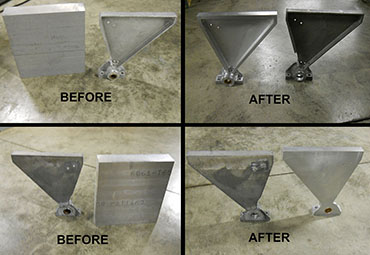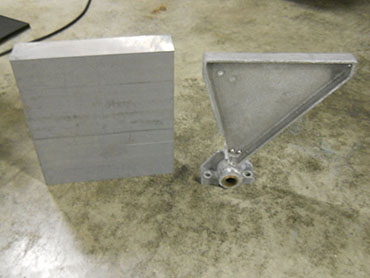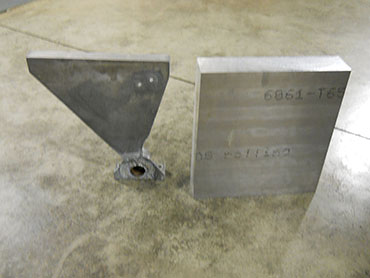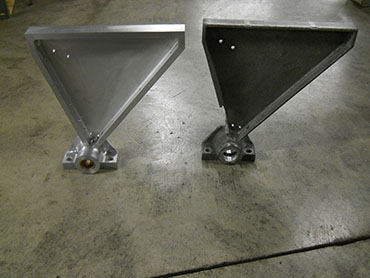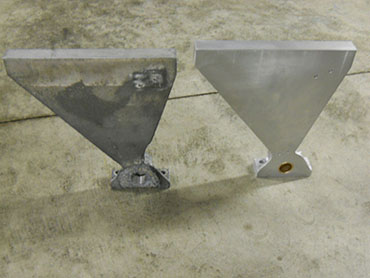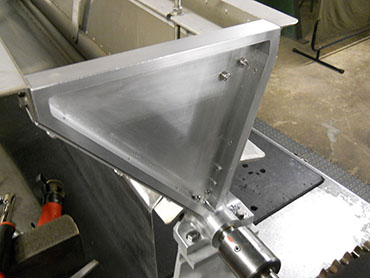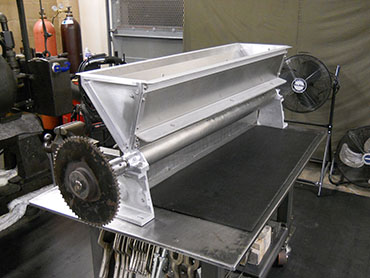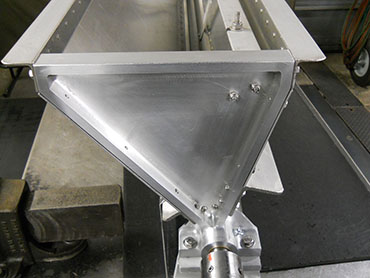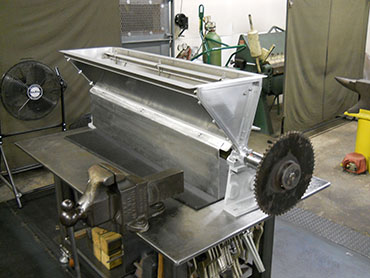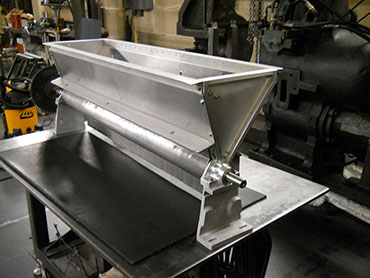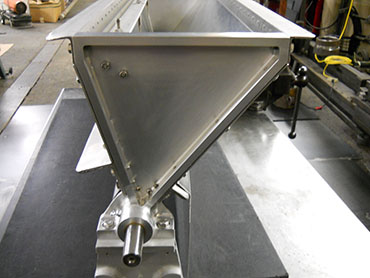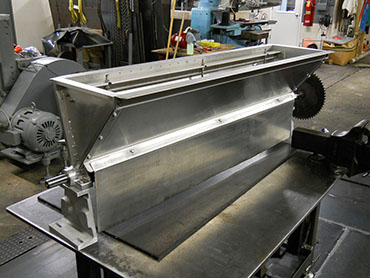Project Case Study
Salt spreader for the food industry
Below is a process time-line from a repair/rebuild request arriving at Columbia Machine Co. We have included the methodology behind rebuilding/repairing vs. purchasing new.

Salt, as fine as baking soda, is filled to the top of the container.
A chain rotates a large sprocket which then rotates the "salting" shaft. The shaft has very special bronze ‘scoops’. As the shaft rotates, the brass scoops fill with salt, eventually dumping the salt onto the product.

From years of service, the machine was showing obvious signs of wear. Salt deteriorated the main bracketry. The brackets were side specific; one left, one right. They contained bronze bushings which the shaft solely relied on for support and lubrication. The salt, as well as daily washing of the machine deeply pitted the cast aluminum brackets. The pitting allowed for salt and water to enter the bushings. This evasive brine mixture deteriorated the bushings. The shaft began to lose its needed support and lubrication, causing it to seize.
At this point, our customer was faced with two options. Replace the machine entirely or make the needed repairs to the existing machine.
The machine that had given decades of service was now obsolete. With only two OEM parts in storage, getting the additional OEM parts required was not a possibility. A repair would require a full rebuild. The unique parts required for the repair would have to be custom made. Those too complex would have to be professionally repaired.
A repair was possible, new machinery was not. Though a new machine, of a completely different design, was available however, the $20,000 dollar price tag was out of budget. In addition, the modifications and installation required for the new machinery would have been extensive as well as the downtime to the equipment.
Above all of that, the process in which the new machine salted was different. This was a major concern. With a product that has tasted the same for decades, changing something so major was unacceptable.
At this time the customer made the choice to seek our services.
Upon delivery, a face-to-face consultation determined what was needed to put the machine back into service, what the time-frame would be, and how much the repairs would cost.
Once the parameters were established, the rebuild began. The machine was carefully disassembled, each part was inspected and sorted into a repair or replace pile.



Once disassembled, the parts needing repair were thoroughly cleaned using high pressure hot water. The ‘scoop shaft’ was one of these parts. Cleaning revealed the bushing surfaces were considerably worn. The shaft would need resurfaced. Our fix for this problem was to apply weld to the undersized area ‘building it up.’ The excess weld was machined down (on the lathe) until the desired sized was achieved.
Once the shaft was repaired, the focus turned to the parts needing custom made. Both the right and left side brackets needed to be made.
The brackets were measured, a rough sketch of the dimensions followed. The brackets began as billets of 6061 T-6 aluminum.
The billets were then machined with a combined effort of a, CNC 2 – axis milling machine, a manual milling machine, and pneumatic cutting tools.
Once machining was complete, the parts were deburred, cleaned, and the new bushings were installed.
Through trade experience, the new parts were outfitted with oil-lite bushings. When these bushings encounter friction, they ‘sweat’ oil. Though the bushings will be greased, this extra feature will provide a longer lifespan.
Assembly began, as a layout of clean parts and new stainless steel fasteners. Through trials and triumphs the newly repaired salter began taking shape. Minor adjustments were made, and quality was checked each step of the way.
Following assembly, the salter was checked for proficient functionality. Ensuring grease entered the critical areas, and the shaft turned freely. Before delivery, guarding and critical fasteners were doubled checked.

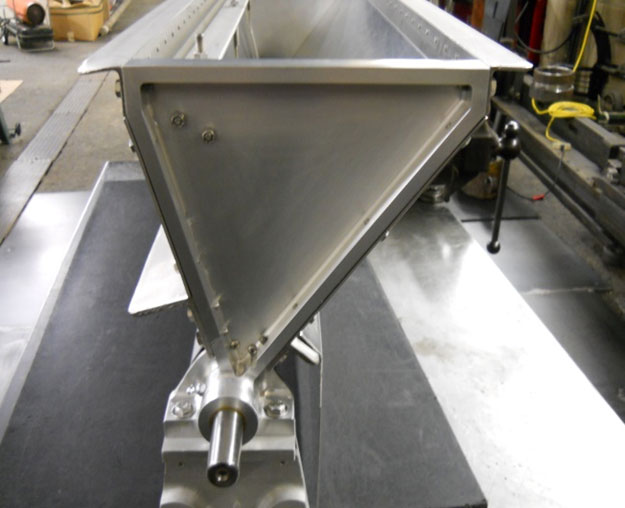
The facility maintenance personnel re-installed the rebuilt salter. The customer was beyond satisfied with their newly rebuilt piece. A foundation component of their operation was restored. The build was within timeframe and budget. In fact our quality repairs were still less than half the cost of the new machine!
Our process’ and strides for quality go into everything we do here at Columbia Machine. Whether it’s an extensive rebuild for a large facility, a blueprint build for the mining industry, or simply making new lawnmower part from the broken one, the same quality, the same, pride, and the same procedure follows here at Columbia Machine. We strive to deliver uncompromising quality to our customers each and every job.

